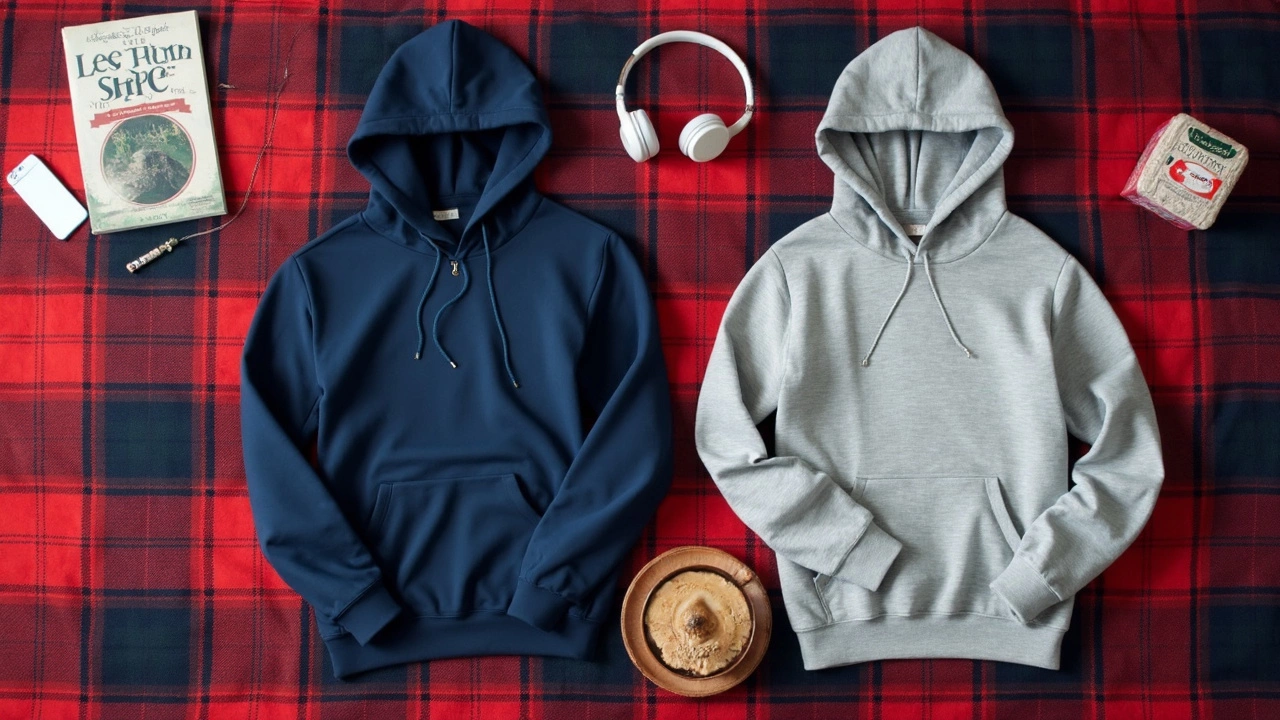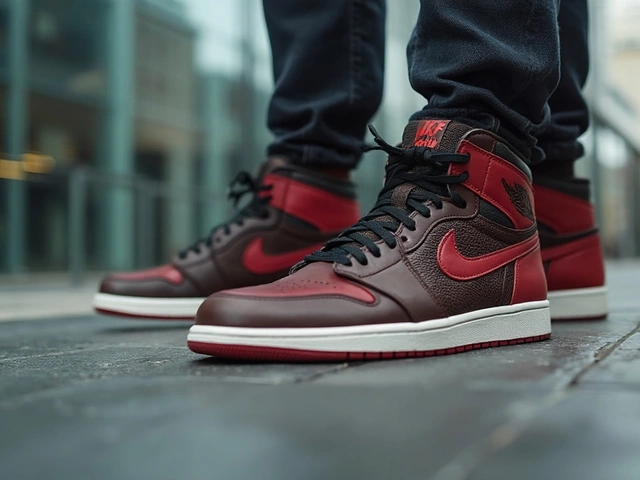Should Hoodies Be Tight or Loose? How to Get the Perfect Fit

- Cleo Fairchild
- 15 June 2025
- 0 Comments
You know that moment you slip on a hoodie and instantly feel at home? Finding that sweet spot between too tight and too baggy can really change how you feel about your favorite hoodie. People argue about what’s better: snug and fitted or slouchy and oversized. It’s not just about looks—your choice changes everything from warmth to how easily you move.
If your hoodie’s squeezing your body, it might look trendy, but forget about wearing it all day. On the other hand, a hoodie that’s super loose can feel like a warm hug—or make you look like you borrowed it from a giant. So, which side do you land on? The truth is, it depends on what you need from your hoodie, what you’ll be doing, and how you want to look.
The secret is being honest with yourself. Do you need a hoodie that keeps you cozy during night walks, or one that won’t get in the way at the gym? Do you love layering clothes, or do you wear a hoodie like a stand-alone statement? These answers make a big difference when you’re figuring out if tight or loose is your thing.
- What Makes a Hoodie Tight or Loose?
- Style Meets Comfort: The Pros and Cons
- Picking the Right Fit for Every Activity
- How To Nail Your Perfect Hoodie Size
- Expert Tips for Hoodie Shopping
What Makes a Hoodie Tight or Loose?
If you’ve ever wondered why some hoodies hug your body and others hang off your shoulders, it all comes down to a mix of design, materials, and sizing. It’s not just about picking your usual size—brands use different patterns and cuts, so a medium in one brand could fit totally different from another.
Key differences that control a hoodie’s fit come from a few main factors:
- Cut: Slim-fit hoodies are made to sit close to your body, while relaxed fits give you extra room.
- Material Blend: Hoodies with a lot of spandex or elastane will stretch and sit tighter on your body. Classic all-cotton or cotton-poly blends rarely stretch as much, so they often fit looser.
- Pocket and Ribbing Design: Kangaroo pockets or thick, tight ribbed hems will cinch the hoodie at the waist, making the body balloon out a bit versus no pockets or a loose hem.
- Length: Shorter hoodies feel snug, while longer ones can feel loose even in the same size.
Did you know most people actually buy their hoodies up to one full size larger for everyday wear? Surveys from a major U.S. retailer in 2024 found that 68% of customers chose a loose fit, especially for loungewear and travel.
| Fit Type | Typical Fabric | Popular Use |
|---|---|---|
| Slim/Tight | Blends with elastane (e.g., 80% cotton, 20% spandex) | Workouts, layering, street style |
| Loose/Relaxed | Heavyweight cotton, cotton-poly mix | Loungewear, oversized looks, casual days |
When choosing, don’t just go by what the label says. Try it on and lift your arms. If the bottom rides up or the sleeves pull back, it’s more on the tight side. If it droops far past your waist and you could wear two shirts underneath, that’s a loose fit. Your favorite fit isn’t just about numbers—it’s how you feel when you throw it on.
Style Meets Comfort: The Pros and Cons
People love hoodies for two big reasons: style and comfort. The thing is—tight and loose hoodies each hit those marks in really different ways. Let’s talk honestly about how each fit changes not just how you look, but how you feel and what you can actually do in your hoodie.
Tight hoodies get a lot of attention from fitness fans and people who like a neat silhouette. They show off your body shape and don’t get in the way if you’re active. Think of runners and gym-lovers—these folks pick tighter fits so sleeves aren’t flapping and extra fabric isn’t bunching. A closer fit also keeps warmth closer to your skin, which is perfect if you hate chilly drafts sneaking in.
But, let’s be real: The tighter the hoodie, the less wiggle room you have. It’s easy to feel restricted, and if you want to layer underneath, forget it. After washing a few times, any shrinkage makes the fit worse. And if sweating is an issue, tight hoodies can turn into little saunas.
- Loose hoodies are the go-to for coziness. They’re trendy for streetwear and lounging, letting you hide snacks, hands, or even a bad day’s hair. You’ve got space to pile on tees or even another light sweater underneath, so loose fits are super practical when the temperature changes.
- Downside? Sometimes you’ll look a little lost in all that fabric, and if you’re doing anything athletic, the hoodie gets in the way fast. Extra room also means warmth escapes, so for cold weather you may spend more on heating or additional layers.
If you’re curious how real people feel about different hoodie fits, check this quick breakdown from a 2024 survey of high school and college students:
| Fit Preference | Percent (%) |
|---|---|
| Tight Hoodies | 39 |
| Loose Hoodies | 61 |
So, more people do reach for a looser fit, but there’s no right answer—just the right fit for your lifestyle. If you care most about warmth and activity, go tighter. Want comfort and versatility? Loose might be your move.

Picking the Right Fit for Every Activity
The big question is: where are you going in your hoodie, and what are you doing when you get there? This choice isn't about sticking to trends—it's about making your life easier and more comfortable. Here's how to match your hoodie fit to real-life situations.
If you’re heading to the gym or planning to be active, a tighter fit usually works best. You don’t want sleeves flopping around or extra fabric catching on equipment. Athletic hoodies are often made with stretchy material and a closer cut. These let you move freely, wick sweat, and keep your body warm without bulk. Just make sure you can still move your arms and shoulders without feeling squished.
But if you’re chilling at home, running weekend errands, or layering clothes, a looser hoodie rules. Oversized hoodies are great for lounging, movie nights, or quick coffee runs—they give you room to breathe, layer tees or thermals underneath, and move around with zero restrictions. That's also why loose fits are super popular with teens and college students—ultimate comfort, no judgment.
For outdoor activities like hiking or camping, a middle ground works best. You’ll likely want a hoodie that’s relaxed but not too baggy. This way, you can easily slip it over a base layer but still have enough structure to add a jacket on top. Weather can change fast outside, so being able to layer up or down without feeling bulky matters a lot.
Shopping? Social events? Go by your personal style. Some people love the streetwear look of an oversized hoodie; others prefer the sharpness of a fitted style. Whichever fit you pick, just check that you can zip it up (if it’s got a zipper), that cuffs aren’t strangling your wrists, and that the hoodies don’t ride up when you reach above your head.
If you’re ever unsure, brands like Nike and Adidas actually label their fits—look for terms like "regular fit" for a balanced feel, "slim fit" for tight, and "relaxed" or "oversized" for extra room. A quick check of a hoodie’s label or online sizing guide can help you nail the right choice for what you do every day.
How To Nail Your Perfect Hoodie Size
Getting your perfect hoodie size isn’t a guessing game—there’s a way to get it right every time. Sizes can be all over the place, depending on the brand, the style, and where it’s made. A hoodie that fits just right should feel comfy, let you move, and make you want to wear it everywhere. Here’s how to make sure you don’t end up with something you’ll regret wearing (or not wearing).
Start with these steps:
- Grab a hoodie you already love. Lay it flat and measure from shoulder seam to shoulder seam, and from armpit to armpit.
- Don’t forget about length. Measure from the top of the shoulder down to the hem, and from the sleeve’s top to the end of the cuff.
- Check your own body measurements too, especially if you’re shopping online. Shoulders, chest, and arm length are the big three to get right.
- Compare those numbers with the sizing chart from whatever brand you’re eyeing. Most brands post charts somewhere on the product page.
Pay attention to the fabric. Cotton hoodies can shrink a little after the first wash—sometimes up to 3-5%. If your brand of choice gives shrinkage warnings or guidance, trust them. Polyester and blends tend to hold their shape but might not feel as soft. Look for key words like "pre-shrunk" or "relaxed fit" in the product details.
If you’re stuck between two sizes, think about what you’ll use the hoodie for. Lounging? Go loose. Working out or layering? Aim for a closer fit. Here’s a quick breakdown to help with your decision:
| Activity/Need | Best Fit | Size Tip |
|---|---|---|
| Lounging at home | Loose | Go one size up |
| Layering under a jacket | Tight/Fitted | Stick to your measurements |
| Sports or workouts | Slim fit | Choose your actual size |
| Style statement | Loose/Oversized | One or two sizes up |
Remember, even the hoodies labeled as “unisex” or “men’s” may fit differently if you’re shopping in the women’s section, so always check the measurements instead of assuming your usual number will work everywhere.
One last tip: read real user reviews. People online aren’t shy about saying if a certain hoodie runs big or is a tight squeeze. Those comments can save you so much hassle and save you money on returns.

Expert Tips for Hoodie Shopping
Before you drop cash on a new hoodie, let’s get into the nitty-gritty of smart shopping. Picking the right fit is about more than just grabbing your usual size and calling it a day. Here’s what makes all the difference:
- Hoodies shrink—a lot of cotton blends can lose up to 5% in length after the first wash. Always check the fabric content and washing instructions. Pre-shrunk fabrics give you one less thing to worry about.
- Size charts aren’t universal. A medium in one brand might fit totally differently in another. Measure a hoodie you already love and compare its numbers to the size guide before ordering.
- Want a fitted look? Check if the hoodie has a "slim fit" or "athletic cut" label. For a relaxed style, search for "oversized" or "relaxed fit" labels. These terms actually mean different measurements and shapes in most brands.
- Try it on with what you’ll wear underneath. If you often wear layers, size up a little so you don’t feel stuffed or restricted.
- Pocket placement matters! Hoodies with kangaroo pockets sometimes have a boxier shape to make the pocket work. Double-check the shape if you care about how it sits on your frame.
Lots of people get stuck because hoodie fits change every season. Fast fashion companies tend to make hoodies up to 2 inches wider and longer every few years just to follow trends. Here’s a quick table showing standard hoodie measurements by type, based on a 2024 fashion industry survey:
| Fit Type | Chest Width (M) | Body Length (M) | Sleeve Length (M) |
|---|---|---|---|
| Slim Fit | 21" | 27" | 33" |
| Regular Fit | 23" | 28" | 34" |
| Oversized | 25" | 30" | 36" |
Don’t ignore little details like drawstrings, cuffs, or zipper quality. A hoodie with tight, thick cuffs will stay in place but feels different compared to loose wrist bands. Zip-up hoodies stretch out less in the chest, while pullover styles give more freedom in the fit.
If you shop online, read real customer reviews—especially any that talk about sizing. If a lot of people mention "runs small" or "super roomy," believe them. That feedback will save you returns and frustration.
Finally, think about when and where you’ll wear your hoodie most. Chilling at home? Go bigger for lounging. Hitting the gym or running errands? You’ll probably want something closer to your true size. Invest in what fits your lifestyle, not just what looks good on a hanger or model.


